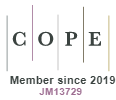Analysing the Urban Quality of Upper Bazaar: A Key Public Realm in Hamirpur, Himachal Pradesh, India
DOI:
https://doi.org/10.15415/cs.2014.21001Keywords:
Hill town, Public Realm, Qualitative Analysis, Visual Survey, Stakeholders, Urban Design Guidelines, Development ControlsAbstract
This paper presents the qualitative analysis of ‘Upper Bazaar’, a key public realm of Hamirpur, a small hill town in the state Himachal Pradesh, India. The analysis is based on primary visual surveys, which were undertaken to determine the present-day building and land-use distribution, condition of the building stock, condition of open / un-built spaces, type and quality of open spaces, presence / absence of trees and, the temporal activity pattern of the chosen study area. A questionnaire-based, random survey was also conducted to get the users’ feedback on their experiences of the public realm as well as to know their aspirations from the place. The study reveals that the success of ‘Upper Bazaar’ depends solely on its vivid and varied activity patterns, while it lacks appropriate physical conveniences and visual appeal. The study brought into focus the urgent need for preparing suitable urban design guidelines and development controls, taking into consideration the aspirations, need andpriorities of all sakeholders, so as to ensure its long term vitality, viability and vibrancy.
Downloads
References
BECK, H. (2009) Linking the quality of public spaces to quality of life. Journal of Place Management and Development. 2(3). p. 240-248. [Online] Available from http://dx.doi.org/10.1108/17538330911013933 [Accessed: 31 March 2014]
CHESHMEHzANGI, A. (2012) Identity and public realm. Procedia Social and Behavioural Sciences. 50. p. 307-317. [Online] Available from http://dx.doi.org/10.1016/j.sbspro.2012.08.036 [Accessed: 15 June 2014]
HAGUE, C. & JENKINS, P. (2005) Place identity, planning and participation. London: Routledge.
INDIA. GOVERNMENT OF HIMACHAL PRADESH. (2004) Development Plan for Hamirpur Planning Area, Himachal Pradesh. [Online] Available from http://admis.hp.nic.in/himachal/tcp/DPHamirpur.pdf. [Accessed: 16 April, 2014].
INDIA. MINISTRY OF HOME AFFAIRS. (2011) Census of India 2011. New Delhi: Government of India.
LYNCH, K. (1960) The Image of the City. MIT Press, Cambridge.
SARKAR, A. (2008). From ‘Space-creation’ to ‘Place-making’. Architecture – Time, Space & People. 8(5). 20-24.
TIBBALDS, F. (1992) Places Matter Most, in TIBBALDS, F. Making People-Friendly Towns: Improving the public environment in towns and cities. Longman, Harlow. [Online] Available from http://dx.doi.org/10.4324/9780203469521 [Accessed: 16 April, 2014].
UNITED KINGDOM. COUNTY BOROUGH OF BLAENAU-GWENT. (2008) Public Realm Design in the Heads of the Valley: a Good Practice Guide [Online] Available from: www.blaenau-gwent.gov.uk/documents/DLDP/SD120.pdf. [Accessed: 21June, 2014].
WHITE, E. (1999) Path – Portal -Place: Appreciating Public Space in Urban Environments. Architectural Media Ltd, Tallahassee
Downloads
Published
Issue
Section
License
Articles in the Journal of Creative Space (Creat. Sp.) by Chitkara University Publications are Open Access articles that are published with licensed under a Creative Commons Attribution- CC-BY 4.0 International License. Based on a work at https://cs.chitkara.edu.in. This license permits one to use, remix, tweak and reproduction in any medium, even commercially provided one give credit for the original creation.
View Legal Code of the above-mentioned license, https://creativecommons.org/licenses/by/4.0/legalcode
View Licence Deed here https://creativecommons.org/licenses/by/4.0/
 |
Journal of Creative Space by Chitkara University Publications is licensed under a Creative Commons Attribution 4.0 International License. Based on a work at https://cs.chitkara.edu.in/ |







